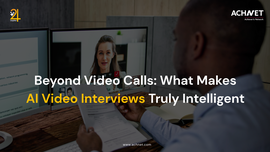The AI-Powered Blueprint for Writing Effective Job Descriptions
Writing an Effective Job Description: A Step-by-Step Guide
A well-crafted job description does more than simply announce an opening. It sets expectations, attracts the right candidates, and provides a foundation for performance management and legal compliance. Yet many organizations spend hours wrestling with wording, structure, and formatting before they land on a coherent draft. What if you could compress that process from hours to minutes while maintaining (or even improving) clarity, consistency, and impact?
Below, we’ll walk through each essential component of a strong job description, share best practices for writing it, and then explore how modern AI agents can streamline the entire workflow so you can focus on finding and engaging top talent.
1. Getting Started
Before drafting, remember these guiding principles:
- Incumbent neutrality: Describe the role, not any specific person. That ensures the description remains accurate over time, even if minor responsibilities shift.
- Purpose-driven: A job description should answer, “Why does this position exist?” This aligns recruiting, development, and compensation around shared goals.
- Flexibility: Avoid detailing every micro-step of the job; focus on core functions so the description remains useful even as day-to-day tasks evolve.
By anchoring your draft in these principles, you set a solid foundation for attracting the right candidates and supporting later HR processes.
2. Core Components
A complete job description typically includes five key sections. Let’s break each down:
a. Job Title
- Length & clarity: Keep it to 1–4 words.
- Consistency: Align with internal and industry-standard titles so candidates immediately understand seniority and function.
- Avoid inflation: Resist adding unnecessary embellishments like “Guru” or “Ninja.”
b. Job Purpose
- Bird’s-eye view: 2–4 sentences summarizing why the role exists.
- Connection to business goals: Explain how the position advances team or company objectives.
- Focus on outcomes: Center on impact rather than tasks (“Ensure brand consistency” instead of “Review social media posts”).
According to a study by Recruitcrm, an average job description is approximately 775 words long and takes about 44 minutes to write manually.
c. Duties & Responsibilities
- List 4–7 essential functions, each with:
- What is done
- Why it matters
- Frequency (daily, weekly, monthly)
- Highlight decision-making authority and budget or supervisory responsibilities.
- Combine or omit tasks under 5% to maintain focus.
According to Ongig, 42% of resumes received don't meet the roles’ requirements.
d. Qualifications
- Required and Preferred:
- Education & Experience: List minimum degree or certifications and specify years/type of prior experience.
- Knowledge, Skills & Abilities: Define proficiency levels and include both technical and soft skills.
- Licenses/Certifications: Note any mandatory credentials.
Moshjd cites that clear job descriptions make employees 84% more likely to stay with their current company.
e. Working Conditions
- Describe the environment (office, remote, field).
- Outline physical demands (e.g., lifting, standing).
- State schedule expectations and mention travel requirements.
3. Writing Tips & Best Practices
- Use concise, direct language with active verbs.
- Avoid jargon and spell out acronyms on first use.
- Replace vague verbs with clear actions.
- Use inclusive language and focus on essential responsibilities.
4. Accelerating the Process with AI
Traditionally, drafting and refining a job description involves multiple stakeholders, emails, and rounds of edits. But with AI agents, you can transform that process:
Simple Prompting
Provide a one-line prompt such as: “Draft a job description for a Senior Marketing Manager at a mid-sized B2B software company.”
Automated Section Generation
- Title & Purpose: AI suggests a concise title and objective summary aligned to market standards.
- Responsibilities: Role-specific duties with context and frequency.
- Qualifications: Required vs. preferred segments.
- Working Conditions: Based on remote/onsite structure.
Instant Revision & Customization
Adjust prompts to regenerate specific sections (e.g., “add budget management responsibilities”).
Consistency and Accuracy
AI ensures alignment with industry norms, reduces bias, and maintains internal consistency.
5. Putting It All Together
By combining the structured approach above with AI-driven drafting, you can:
- Reduce drafting time to minutes.
- Ensure data-backed language and clarity.
- Refocus HR on engagement, not documentation.
Hirebee suggests 90% of HR decisions will be AI-supported by 2025.
Next Steps:
- Develop a prompt with role and company context.
- Generate your draft using an AI platform.
- Refine and publish.
6. Example in Action: From Prompt to JD, Assessment, and Interview with iJupiter™
When you don’t have a formal JD ready, iJupiter™ can draft one from a single prompt—and then instantly build the evaluation flow around it (assessment + interview), so you can identify best-fit candidates without extra back-and-forth.
Step 1 — Give iJupiter™ a simple prompt
Role: Senior Product Manager
Context: Enterprise SaaS, 10+ years’ experience
Focus: Product strategy, GTM, stakeholder management, compliance & security
Notes: Collaborates with sales & customer success; hybrid; moderate travel
Step 2 — Receive a complete, structured JD
AI Agent iJupiter™ generates a clear, incumbent-neutral JD with:
1. Title & Purpose (why the role exists and its business impact)
2. Duties & Responsibilities (4–7 essentials with crisp outcome focus)
3. Qualifications (required vs. preferred, technical + soft skills)
4. Working Conditions (environment, schedule, travel)
You can accept as-is or request quick refinements (e.g., “emphasize GTM ownership,” “add budget oversight”).
Step 3 — Auto-create the role-aligned assessment
From the JD requirements, iJupiter™ builds a contextual assessment that maps directly to the competencies and tools mentioned (e.g., roadmap prioritization, stakeholder alignment, security/compliance awareness). Difficulty and length can be adjusted in seconds.
Step 4 — Auto-create the structured interview
Using the same JD signal, iJupiter™ generates role- and industry-specific interview questions (behavioral, situational, and technical) and can conduct the interview itself, capturing candidate responses for review.
Step 5 — See best-fit candidates instantly
As candidates complete the assessment and interview, you get clear, side-by-side reports tied to the JD’s must-haves, so your top matches surface immediately for next-step decisions.Conclusion
Writing an effective job description no longer needs to be a drawn-out, manual ordeal. By pairing best-practice structure with advanced AI assistance, you can create clear, compelling, and compliant descriptions in a fraction of the time. At ACHNET, we’ve built our AI Agent–driven professional development and hiring platform around exactly this principle. With iJupiter™, your team can generate, refine, and finalize polished job descriptions at lightning speed, eliminating bottlenecks and ensuring you attract the best candidates from day one.
Ready to see it in action? Book a demo of iJupiter™ today and discover how AI-powered job description drafting can transform your hiring process.





